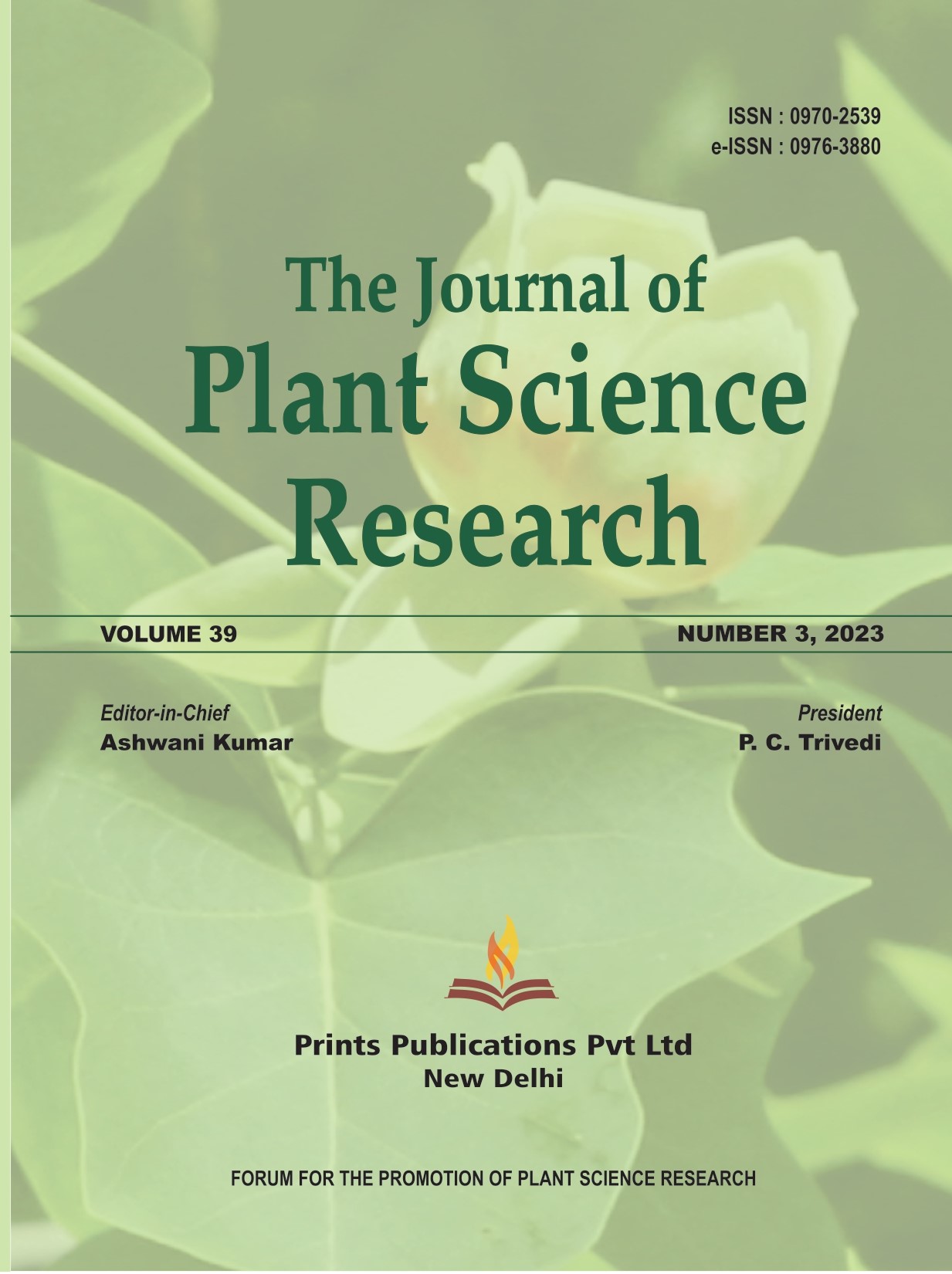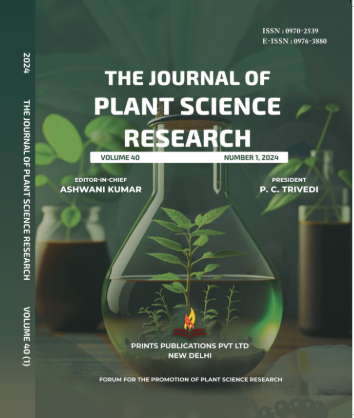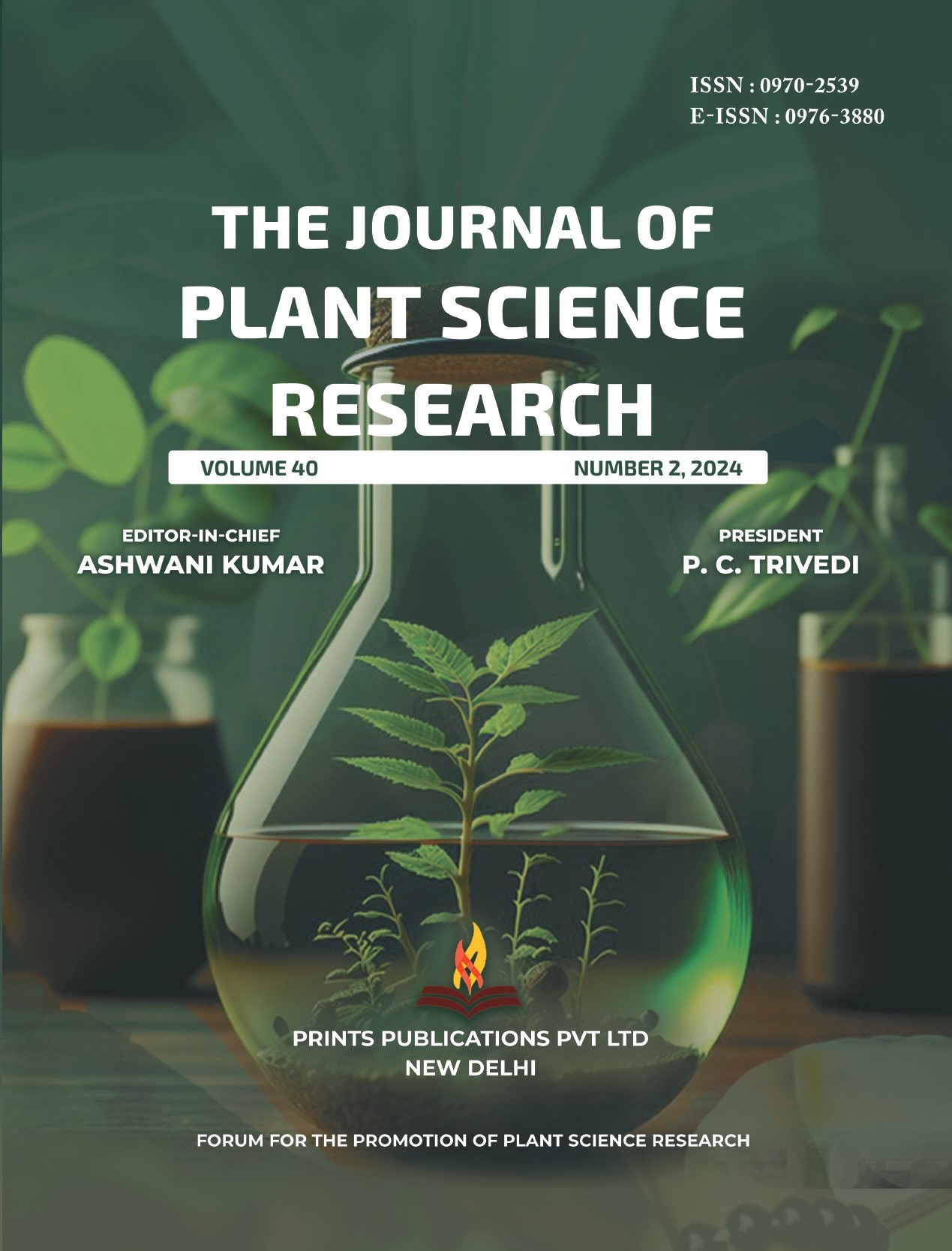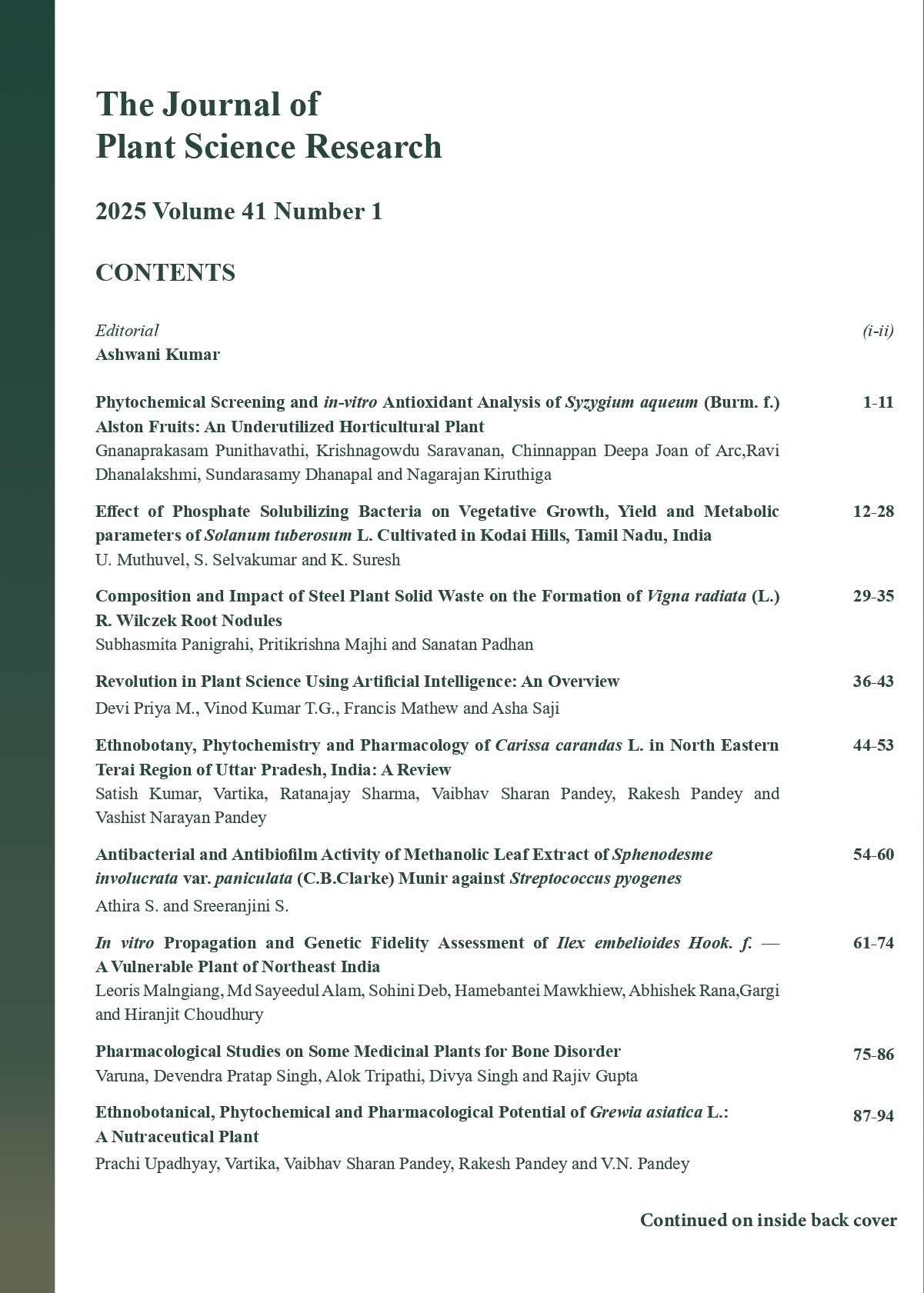The Journal of Plant Science Research - A UGC Care-Listed Journal
Published in Association with Forum For the Promotion of Plant Science Research
Current Volume: 41 (2025 )
ISSN: 0970-2539
e-ISSN: 0976-3880
Periodicity: Tri-annual
Month(s) of Publication: April, August & December
Subject: Botany
DOI: 10.32381/JPSR
Online Access is Free for Life Member
Punica granatum: Cultivation and Medicinal Importances
By : Ritesh Kaur, C P Malik
Page No: 149-160
Abstract
Punica granatum, commonly known as pomegranate (Pg), is a member of the monogeneric family, lythraceae, and mainly found in Iran which is considered to be its primary centre of origin. Pg and its chemical components possess various toxicological and pharmacological properties including antioxidant, anti-inflammatory (by inhibiting pro-inflammatory cytokines), anti-cancer and anti[1]angiogenesis activities. They also show inhibitory effects on invasion/motility, cell cycle, apoptosis, and vital enzyms such as cyclooxygenase (COX), lipooxygenase (LOX), cytochrome P450 (CYP450), phospholipase A2 (PLA2), ornithine decarboxylase (ODC), carbonic anhydrase (CA), 17beta[1]hydroxysteroid dehydrogenase (17b-HSDs) and serine protease (SP). In addition, they can stimulate cell differentiation and possess anti-mutagenic effects. However, the exact mechanisms for its pharmacological and toxicological properties remain to be uncertain and need further evaluation. These properties strongly suggest a wide range use of Pg for clinical applications. This review will discuss the areas for which Pg has shown therapeutic properties in different mechanisms.
Authors :
Ritesh Kaur : Assistant Professor, Department of Agriculture, Asian Educational Institute, Patiala
C.P. Malik : Academic Advisor, Jaipur National University, Jaipur






